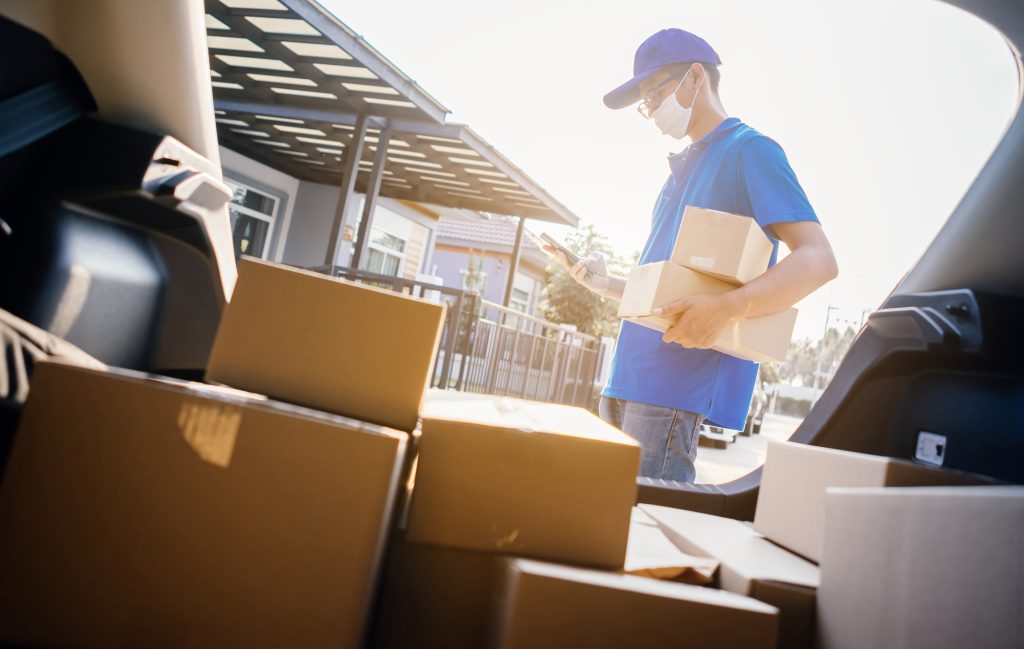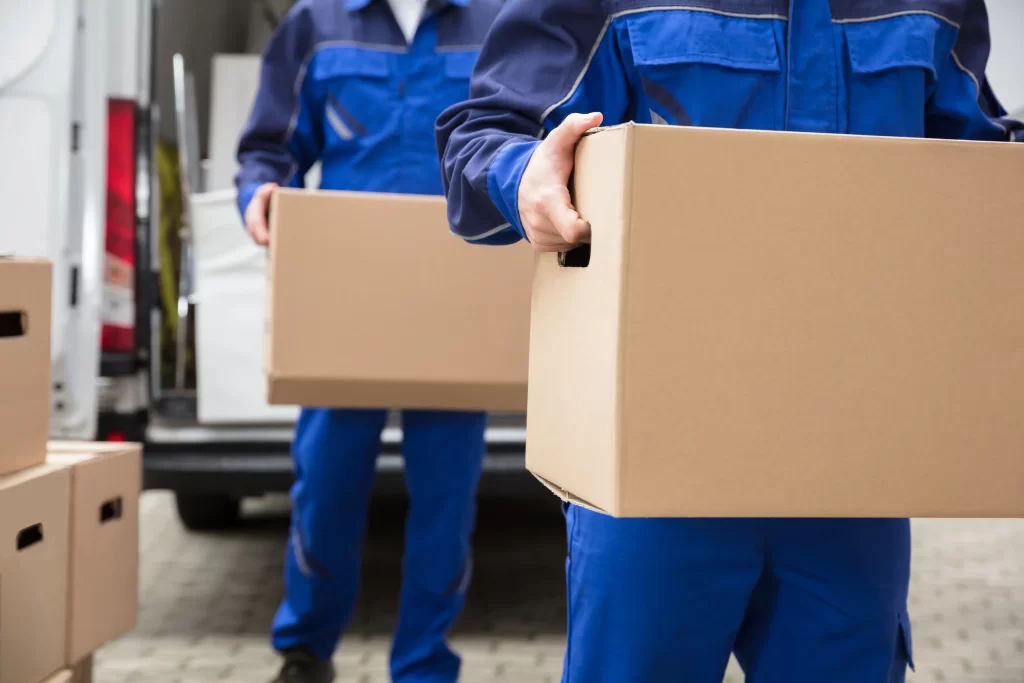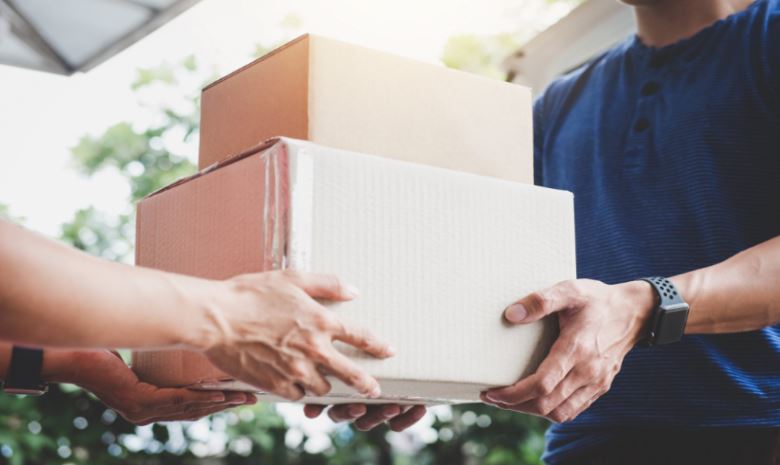Table of Contents
As the world progressively relies on digital communication, there is somehow a traditional allure in opening letter mails.
The life of a letter or parcel, however, is quite complex. It goes through a complicated network of processes and logistics, with the last mile delivery in logistics often being the most important one.
The last mile delivery in logistics is the final leg, from the local distribution center to your doorstep.
It is the point where finesse meets determination, and how efficient this last mile is can seal or ruin a whole delivery process.
In this blog, we journey into the fascinating realm of the Last mile Delivery in logistics unraveling who are these unsung heroes and what goes on behind-the veil for your mail to travel from sender’s hands straight to yours.
Come with us to solve the puzzles of final kilometers and discover what technologies, obstacles, ideas connect making it better parcels productively.
Here, we will look at all aspects of the distribution process – from chaotic focusing centers to your doorstep interactions with the cheery postman.
Thus, sit tight as we take you through the nooks and crannies of this last mile where technology meets people to connect sender with recipient. After all, it is time to salute the art and science behind Last Mile Delivery in Logistics final steps as one admires a new-found knowledge of dedicated efforts.
What Is Last Mile Delivery in Logistics?

The term last mile delivery in logistics refers to the final leg of transportation where goods are transported from a distribution center or a central hub and delivered to customers’ doorsteps.
This specific stage of distribution is pivotal and the most demanding, as it entails overcoming urban challenges like diverse delivery positions, timely accuracy in reaching out to consumers.
Key characteristics and considerations of last mile delivery in logistics include:
Proximity to End Consumers: The last mile is aimed at the final customer located in a dense city or even remote location where goods are delivered as close to the end-user as possible.
Cost Challenges: Last mile delivery in logistics has increased its cost due to the need for a lot of individual deliveries, especially in e-commerce where customers order more frequently and place small orders.
Time Sensitivity: The last mile is very important in meeting the needs of customers who want quick and efficient deliveries.
Diverse Delivery Locations: The delivery can be to individual addresses, businesses or even specific places such as lockers or pickup points therefore requiring flexibility in the system.
Technology Integration: Last mile delivery is contingent on advanced technologies including route optimization, GPS tracking and real time communication.
Sustainability: As environmental issues are becoming increasingly important, there is a significant interest in environmentally friendly and sustainable last mile delivery services which would minimize the negative impact on nature.
Customer Experience: The last mile has a direct influence on the whole customer journey. An effective and efficient last mile delivery process increases customer satisfaction, which can lead to brand loyalty.
Companies that deal with logistics and e-commerce incessantly seek out creative strategies to improve last mile delivery in logistics by exploring solutions such as drones, autonomous vehicles, or collaborative types of delivery.
The aim is to ensure a more effective, economical and greener last mile while keeping pace with growing demands of the consumers for faster deliveries.
Read more: What is Last-mile Delivery? Revolutionizing E-Commerce in Dubai for 2024
What Is The Last Mile Delivery in The Supply Chain?

In terms of supply chain management, last mile delivery implies the final stage in logistics operations that involves shipment from a distribution center or fulfillment center to its end-user—a consumer retailer or enterprise.
It is logically the final leg of the product’s journey through that supply chain proper, encompassing shipment and delivery to customer destination.
Key aspects of last mile delivery in the supply chain include:
Customer-Centric Focus: The end customer’s demand for speedy, accurate and convenient delivery is the primary purpose of the last mile. In this regard, it is a critical component of customer satisfaction and can make or break an organization’s name.
Logistics Optimization: As such, businesses make an effort to perfect the last mile logistics so as […] This includes route planning, inventory tracking and use of technology to simplify the delivery process.
Delivery Networks: Constructing strong delivery networks is crucial for the efficient implementation of last mile deliveries. Companies can use a variety of transport means, such as trucks, vans and bikes or even drones depending on the nature of cargo and delivery point.
Technology Integration: Technology is important for last mile logistics because it allows one to trace movement of shipments, plan the best route that enhances efficiency and control as well as provide real time updates on progress made.
Urban Challenges: Last mile delivery in logistics usually entails moving through the high population densities of cities and thus presents challenges like traffic congestion, parking restriction, which in return has developed sustainable environmental solutions.
Flexibility and Convenience: Consumers need flexibility in delivery options such as time slots, alternative locations and real-time monitoring. Companies aim at making the delivery process convenient and personalized.
Returns Management: Returns handling is a crucial component of last mile delivery. These returns and exchanges require very efficient processes, which contribute to the smoothness of an end-to-end customer experience.
Last mile delivery needs to be efficient as part of e-commerce business and any company that relies on timely supplies delivered directly to end customers.
It is also during this stage that companies invest in cutting-edge technology, strategic partnerships and customized logistics for the last mile.
Last Mile Delivery Tracking

Last mile delivery in logistics tracking is a service that enables individuals and companies to track the developments of their letter or parcels, during final stages prior arrivals. Through the help of tracking systems one can have access to real-time information on where a shipment is at all times, giving senders and recipients clear visibility.
Here’s how the last mile delivery tracking process typically works:
Package Identification: A tracking number or barcode is allocated for each package delivered at the point of dispatch. This identifier is vital for tracking the product along its delivery path.
Scan Points: At the key points of the delivery network, such as distribution centers, sorting facilities and carriers’ hubs where official scanning takes place. These scans synchronize the system with the current location and status of the package.
Real-Time Updates: Sender and receiver are given access to track the information through online platforms or mobile apps. Such information may be the present location, average delivery time and notable events while in transit.
Notifications: Notifications which senders and recipients may receive when packages are out for delivery, delivered or have delays need to be sent either via text message or email.
Proof of Delivery: The tracking system also provides a validation of delivery including the recipient’s name, and date and time at which package was delivered successfully. This goes some way to alleviate fears regarding the safe and accurate delivery of the product.
A number of courier and postal services as well as third-party logistics providers offer last mail delivery tracking.
Online tracking tools help both senders and recipients to know the status of their shipments, which is relatively easy because it can be done sitting in front of a computer.
However, please note that the accuracy and extent of tracking available can be different for postal or courier services in particular.
Know more: The Future Arrives: AI in Last-Mile Delivery Across the UAE
FAQs About Last mile Delivery in logistics
What is meant by last mile delivery in logistics?
Last mile delivery refers to the final phase of the logistics process where goods are transported from a distribution center or fulfillment center to their ultimate destination, which is often the end consumer.
It is the last leg of the supply chain, involving the actual delivery of products to homes, businesses, or designated pickup locations. Last mile delivery is crucial for customer satisfaction, as it represents the point at which the product physically reaches the customer.
What is Amazon last mile delivery?
Amazon’s last mile delivery in logistics refers to the company’s strategy and network of services designed to fulfill customer orders and deliver packages to their final destinations.
This includes Amazon Prime delivery services, Amazon Logistics, and partnerships with local delivery service providers.
Amazon employs various methods for last mile delivery, including its own delivery vans, third-party carriers, and innovative solutions such as Amazon Locker for self-service pickup locations.
The goal is to enhance delivery speed, reduce costs, and improve overall customer experience.
What are the cons of last mile delivery?
The cons of last mile delivery in logistics include:
Costs: Last mile delivery can be expensive due to the need for individualized, often small-scale deliveries.
Traffic and Congestion: Navigating through urban areas can be challenging, leading to delays and increased operational costs.
Environmental Impact: Increased delivery frequency contributes to carbon emissions and environmental concerns.
Customer Expectations: Meeting customer expectations for fast and flexible delivery options can be demanding.
Returns and Failed Deliveries: Managing returns and dealing with failed deliveries add complexity and costs to the last mile process.
What is the last mile delivery scheme?
The last mile delivery scheme refers to the specific plan or system implemented by a company or logistics provider to optimize the final stage of delivery.
This may include strategies for route optimization, technology integration, alternative delivery methods (such as lockers or drones), and partnerships with local carriers.
The goal of a last mile delivery scheme is to make the delivery process more efficient, cost-effective, and customer-friendly while addressing the unique challenges associated with the final leg of the supply chain.
To conclude, the Last mile Delivery in logistics is a blind artist that brings expectancy for parcels to delirious heights.
The last part of this phase is where accuracy and customer satisfaction come together- from distribution centers to the tacit moment when a delivery arrives at your doorstep.
Though remaining full of difficulties, innovative technologies and techniques change the face of the last mile landscape.
As we marvel at the complexity of this ballet between efficiency and human touch, it becomes clear that even the most simple package does not tread a mundane path.
It is the final leg where logistics meets doorstep magic, providing more than just commodities but grins and gratification.




